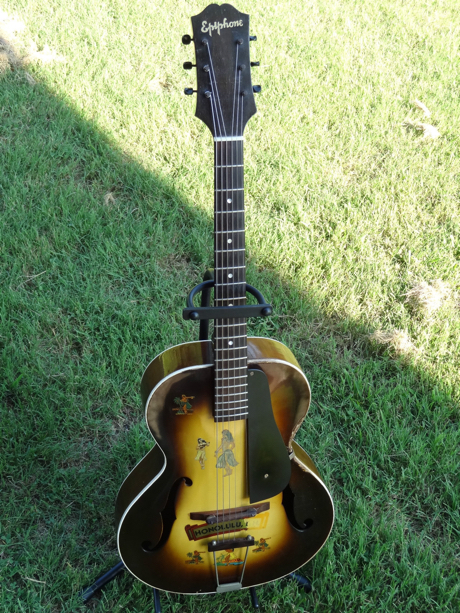
Close-up #2: 1944 Olympic SN 50913
Here a guitar I don't own – I saved these great pictures from an offer on eBay a few years ago if I remember right.
As the label says, this is an Epiphone Olympic model with serial
number 50913. This label is commonly referred to as the "blue" type
since it was printed with blue ink on white paper. The blue label was
introduced when Epiphone changed their serial number system for
acoustic instruments in c. 1943, replacing the "green"
label at the occasion. Note
that the guarantee claim of earlier labels is no longer present on
the blue label.
The
reason for this change is not known –
possibly it was related to restructuring measures after the
untimely death of company president Epi Stathopoulo on June 6, 1943.
The new numbering system appears to have started with SN 50000 (the
highest documented number of the old system being SN 20301).

When introduced in the early 1930s, the Olympic was Epiphone's cheapest archtop model with a list price of $30. It had a carved spruce top with an arched back made of laminated mahogany. During the 1930s, the body was upsized twice until it reached its final width of 15 1/4 inches by 1936.
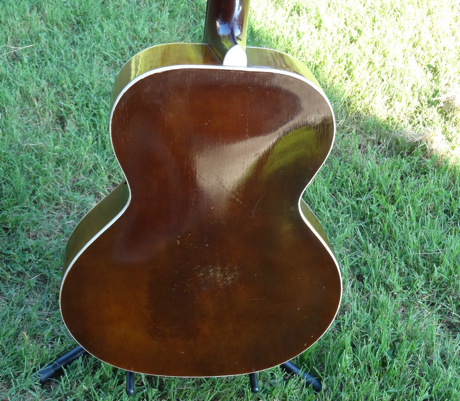
The cool Hawaiian-themed decals on this example were obviously added by a previous owner. If I owned this guitar I would definitely not try to remove them, but leave them on as part of this particular instrument's history!
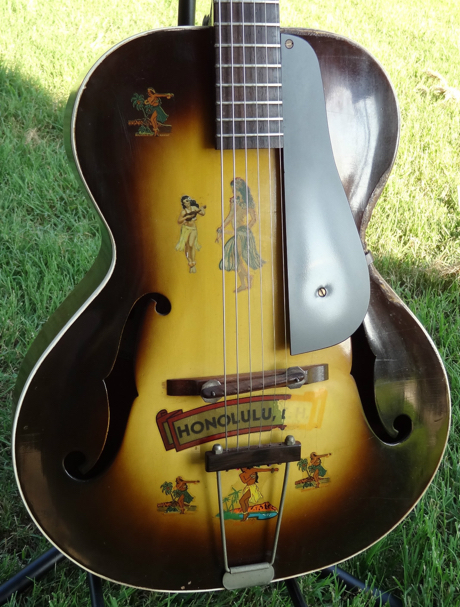
Based on the serial number this Olympic was built in 1944, during the WW2 years. Due to government restrictions, some materials such as certain metal products and woods were not always available during the wartime period. This forced musical instrument manufacturers to use substitute materials for certain parts. Epiphone announced this issue in their 1942 catalog, see picture below.
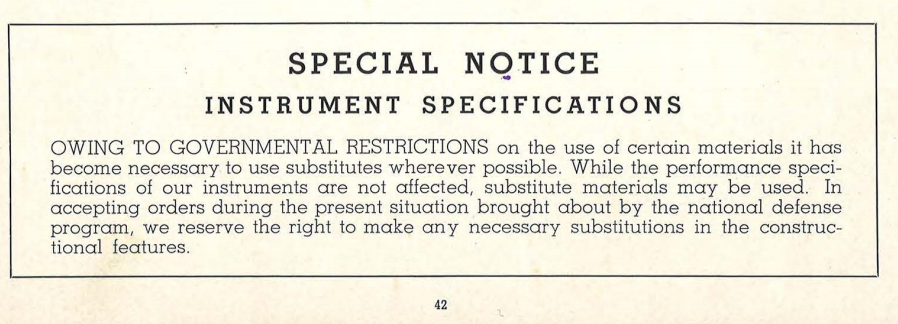
Olympic SN 50931 is an example in which typical wartime features are present:
1. Tailpiece: the metal string retainer was replaced by a rosewood bar.
2. Bridge: the round, knurled thumbwheels for height adjustment were replaced by octagonal units.
The pickguard on this guitar appears to be a short, black example as used in the 1930s – but we don't know if originally on this guitar.
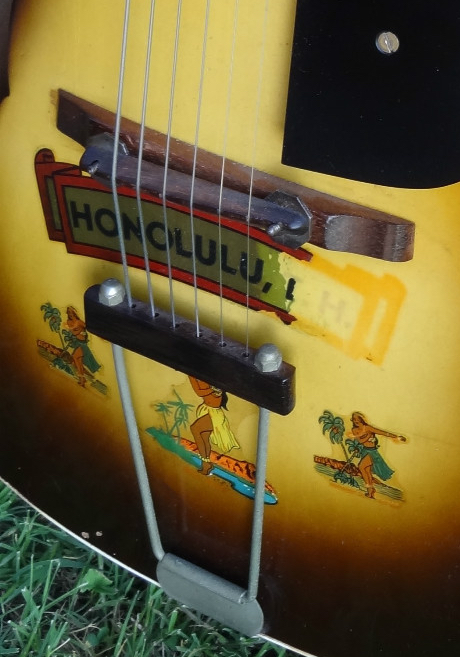
3. Tuners: Starting in 1943, most Epiphone models used Kluson tuners with riveted gears (no screw), either single tuners or three-on-a-strip units. Many of these had black plastic buttons.
4. Top wood/finish: In 1943 the top finish of
archtops changed to an opaque quality – in both sunburst (like
this Olympic) and blonde finish instruments, the latter showing an
"ivory
opaque" top finish often yellowed today. I believe
that the opaque finish was actually introduced to conceal the wood
grain, because during the war years shortages in top quality
spruce seem to have prompted Epiphone to use a different wood
species for some carved tops –
possibly birch
or poplar(?). There are
examples stripped of their originally opaque finish showing an
unusual wood
grain pattern (however so far I never had the opportunity to
personally examine such an example).
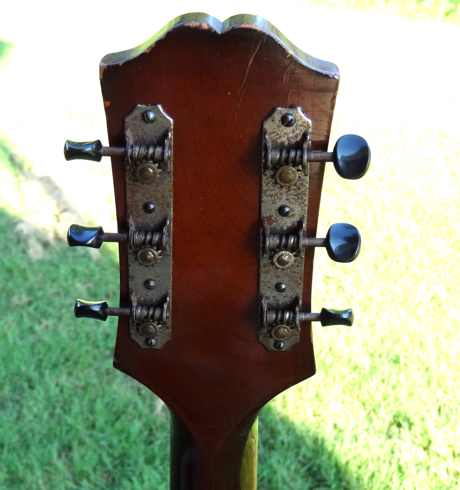
5. On lower models, the pearl of the inlaid "Epiphone" script logo was replaced by celluloid in 1943.
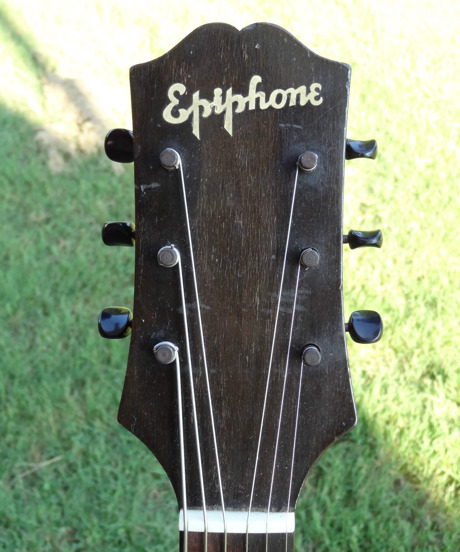
In 1940 Epiphone had introduced cherry wood for necks on most lower and middle models, as present on this Olympic.
Below the description of the Olympic in Epiphone's Catalog V published early 1942. The company kept using this catalog through the post-war years: Price lists referred to this catalog until 1949 when a new catalog was issued.
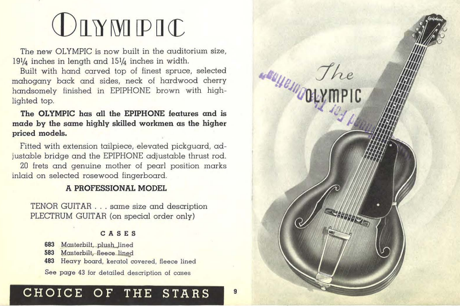
However the Olympic model was discontinued by the end of the war – along with the Ritz archtop and all flattop guitars and mandolins – see the 1946 "Notice" sheet pictured below. Discontinued models were marked in the catalog with a blue stamp stating "Discontinued for the duration".
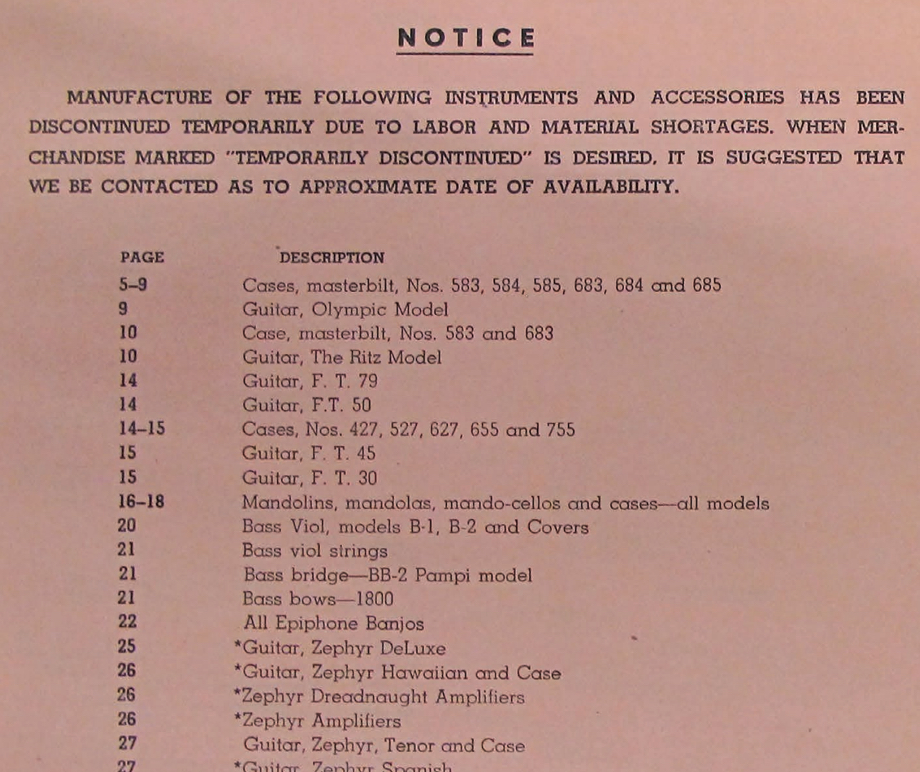
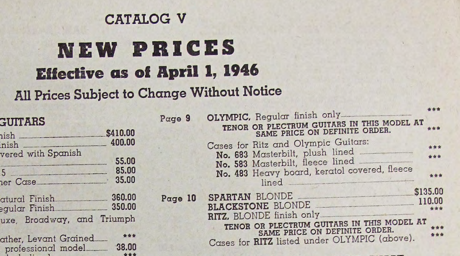
Although the Olympic appeared on price lists until 1948, it was never listed with a price again. The last documented Olympic is SN 52010.
(Sep 21, 2016)